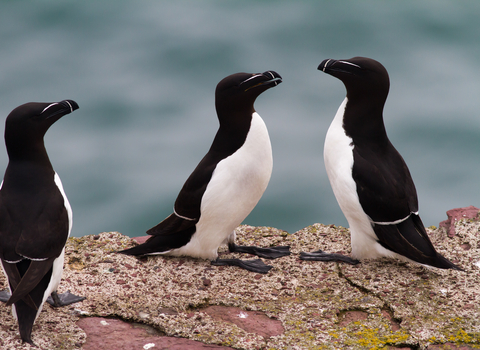
Razorbills ©Mike Snelle
Razorbill
The razorbill has a characteristically thick, black bill, with a white stripe across it. It nests with other seabirds, such as guillemots, but prefers the lower ledges and rocky bottoms of cliffs and deep ravines.
Enw gwyddonol
Alca tordaPryd i'w gweld
March to JulySpecies information
Category
Ystadegau
Length: 37-39cmWingspan: 63-67cm
Weight: 590-730g
Average lifespan: 13 years
Classified in the UK as Amber under the Birds of Conservation Concern 5: the Red List for Birds (2021). Listed as Near Threatened on the global IUCN Red List of Threatened Species.
